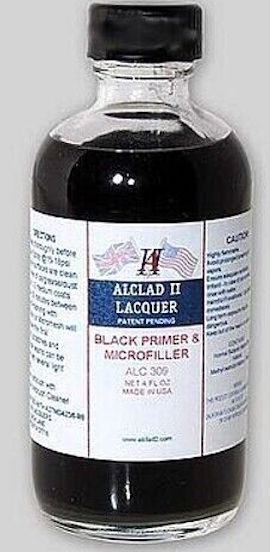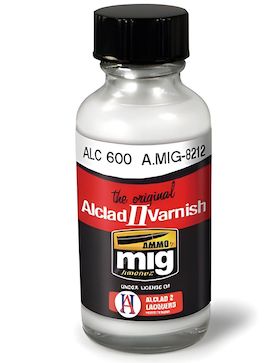
Curated with aloha by
Ted Mooney, P.E. RET

The authoritative public forum
for Metal Finishing 1989-2025

-----
How to chrome plate or give realistic shiny finish to plastic toys and R/C parts
Q. I am a toy restorer as a hobby, and would like to know if there is any home method of restoring plastic toy parts that originally had a realistic shiny chrome effect. I have attempted some spray paints, but the effect came out as a plain silver color - not the shiny actual "Chrome" effect that it originally was.
Russel Withers- Wooburn Green, Bucks, England
2002
A. Hi Russel. The original effect was done by vacuum metallizing. Aluminum was vaporized and deposited on the toy, and then a clear protective lacquer was deposited on top. But even the smallest basic vacuum metallizing equipment is beyond the average collector's means.
I'd suggest you keep looking for the shiniest "chrome-look" paint you can find (they get better each year), and then apply clear coat on top of that to give it some depth and wear resistance. Those shiny mylar balloons are also vacuum metallized and could perhaps be cut up and glued onto your toys--but I don't really know if that would work well even on relatively flat surfaces, let alone on complex shapes. Best of luck.

Ted Mooney, P.E.
Striving to live Aloha
finishing.com - Pine Beach, New Jersey
A. For restoring the Chrome finish on plastic parts. I restore the chrome to plastic turn signal housings for my british motorcycles by stripping them clean, then applying a copper based conductive paint, then running them through my normal small chrome plate system, which is loosely based on on an available kit. If you search for home or hobby plating you find numerous home kits that are simple and effective.
Bud Potter- BrentwoodBay, BC, Canada
2002
!! It is possible to electroplate a bright metal without it actually being chrome, and if Mr. Withers wants to do real electroplating on his toys I suppose he could nickel plate them (although many professionals think it's not a good idea). Real chrome plating, however, requires chromic acid--a toxic carcinogen. In the worst cases, multi-million dollar cleanups of contaminated aquifers have been required because of discharges from chrome plating operations in garages (ref. Odessa, Texas Chromium #1 Superfund Site -- a million dollars in legal fees before the cleanup began). I don't think amateurs and students should be fooling around with carcinogenic chromic acid / hexavalent chrome.
Please see our FAQ, "Understanding Chrome Plating".

Ted Mooney, P.E.
Striving to live Aloha
finishing.com - Pine Beach, New Jersey
A. Try Alsa's Mirrachrome or similar products for a mirror-like paint. We are looking at this process as a replacement to vacuum metallizing for our product since it has geometry that is difficult to obtain even coverage on in a vacuum chamber.
Bob WiedenbeckMotorcycle Accessories - Ft Wayne, Indiana, USA
2004
Multiple threads merged: please forgive chronology errors and repetition 🙂
Chrome plating R/C parts
RFQ: Hi, I need some plastic parts chrome plated. they are r\c car parts from mirrors to full bodies. I've tried finding a D-I-Y kit as it were to do my small kits but really I would like advice and possibly open to offers to take jobs on. Looking for the best results possible! Thanks all Rob
rob [surname deleted for privacy by Editor]hobbyist - herts, herts, uk
2004
Ed. note: This RFQ is outdated, but technical replies are welcome, and readers are encouraged to post their own RFQs. But no public commercial suggestions please ( huh? why?).
A. Hi, Rob. Real plating on plastic (such as used on real automotive grills for decades of exposure to the elements) involves a very expensive and complicated metallization process of many steps. But for R/C parts, you could probably metallize them with two-part silver spray or a copper-rich or silver-rich conductive paint designed for the purpose, and then use a plating kit. Many of us here, myself included, don't think plating is a great hobby though :-)
As an alternative, "chrome look" paint gets better each year.
Regards,

Ted Mooney, P.E.
Striving to live Aloha
finishing.com - Pine Beach, New Jersey
April , 2008
Q. I looking into the cost of assembling RC Models (10 units).
I would like to know the cost of finishing approx. 29" x 29" of white plastic.
Specifically it would be the wheels of the RC Models. Also any links to technical jargon associated with metal finishing would be appreciated.
Thank you for your time.
Sincerely,
RC Models - Manotick, Ontario, Canada
2005
Q. Hi,
I have a modest toy collection and I have some that are made of plastic but have a chrome like finish. The finish is getting worn on some and I'd like to have them restored. I also have several toys that are also plastic with a gold or silver finish but the finish is more like spray paint and not the mirror-like finish I'm looking to have. Can you help me in this? Is there a way I can do this myself or someone I can send them to do the job?
Thank you for your time and attention,
artist - Saugerties, New York
2005
A. Hi Robert. You are right that it is a "chrome-like" / "chrome-look" finish. Toys would not have real chrome plating or gold plating. I think they were probably originally vacuum metallized, that's hard to do except in volume. The new generation of chrome-look paints may suit your needs.

Ted Mooney, P.E.
Striving to live Aloha
finishing.com - Pine Beach, New Jersey
2005
Chrome plating inflatable vinyl toy
Q. Hi there.
I have a question about chrome plating. I want to have an inflatable vinyl toy plated in chrome. I have a gallery show coming up next year and would love to have a limited edition of these done. I've thought about filling them with spray foam to keep their rigidity and weight them down. Is there any to make this happen and do you know of a shop that could perform this special task.
Thank you so much!
fine artist - Los Angeles
December 19, 2008
A. Chrome is not elastic enough. I think it would be simpler to produce your own inflatable using the reflecting plastic foil that is used to make decorative balloons which is readily available. You would have to cut the existing toy by the seams and use the pieces as patterns to cut new pieces of the bright stuff. Then, take them to a shop that welds plastic to assemble them together. Finally, fill the toy with balloons large enough to hold it steady and inflate it with air, nitrogen, foam or whatever. Guillermo Marrufo-Mexico
Guillermo MarrufoMonterrey, NL, Mexico
December 24, 2008
A. Jeff Koons has been making sculptures that resemble inflatable toys for many years. He is having them cast in stainless steel and polished very bright. Maybe you can do the same?
Neil BellAlbuquerque, New Mexico
December 31, 2008
June 25, 2014
A. I have also been looking for that professional chrome finish for r.c. car shells and I have found this product; Alclad II
⇦ this on
eBay or
Amazon [affil links] . Here's a really good guide for the correct application of it:
Alternatively, there's a more professional but expensive option called ALSA Chrome. Very expensive but quite amazing!
I hope this is helpful.
inventor - tamworth, staffordshire, england, u.k.
Q. We are in the process of developing a base coat for Vacuum metallizing FRP by Silver Nitrate spray process. After the spray application of the base coat, it is kept for 30 minutes flash off, followed by heating at 90 °C for 45 Minutes.This is then sprayed with silver nitrate and heated. The observation is that immediately on removal from the oven, the metal deposit has a very good shine, but then it gradually loses its shine and turns dull on cooling. Can you please suggest a solution?
Chidambaran Ramachandran- Hyderabad, Telengana, India
August 3, 2014
A. Sorry cousin Chidambaran, but I can't understand what you say you are doing. Are you trying to obtain a shiny layer on the FRP by vacuum metallizing (with aluminum?) or by spraying with silver nitrate? If you are spraying silver nitrate (and a reducing agent), what does vacuum metallizing have to do with your process? Are you saying it's a two-step process where you first deposit a shiny silver nitrate layer and then subsequently you intend to deposit a second shiny layer by vacuum metallizing?
Why are you baking the silver nitrate -- what is that heating supposed to accomplish? I think I would expect silver to tarnish quite rapidly if it's heated to 90 °C. But perhaps a more experienced reader can see what I am missing.
What do you do about a top coat? Thanks.
Regards,

Ted Mooney, P.E.
Striving to live Aloha
finishing.com - Pine Beach, New Jersey
July 2014
Plating Silicone Rubber
Q. I am curious if it is possible to produce a reflective mirror quality finish on the surface of silicone rubber. Thanks for any advice!
Brian CheatsmithHobbyist - Dayton
April 17, 2015
A. Brian,
Yes, it is possible but you may need a thick primer layer in order to avoid pinholes and other defects. You would probably want to choose a hard silicone rubber. One way to do this, although it's not very inexpensive, is to activate and plate e-less and electrolytic copper as a base coat. On top of the base coat a barrier layer may be a good idea. The barrier layer could be composed of nickel. Then polish to the desired finish and then plate a top coat. Other options include evap/thin film. Additionally, if the part flexes there could be trouble so do thorough testing or mount the substrate in the final assembly such that bending does not occur.

Blake Kneedler
Feather Hollow Eng. - Stockton, California
May 6, 2015
Q, A, or Comment on THIS thread -or- Start a NEW Thread



